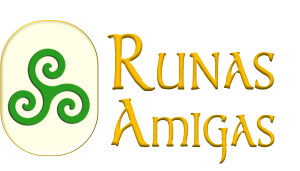saint bernard, great druid of gaul
The Knights Templar and the Druids
I’ve been asked to talk about the relationship between the Templars and the world of the Druids, the Celts and the Runes.
There are many points of contact, although there has been no specific research on the subject.
In my article about the Druids (read it here), I mention the figures of St. Patrick and St. Columbanus, Irish monks who were educated in the Druid school, but today we will talk about other saints of the Christian Church, who establish a solid connection between Druidic knowledge and the very foundations of the Templar Order.
We all know that the Order of the Knights of the Temple was made official in 1128 by Saint Bernard of Clairvaux, the monk who wrote the Rule and obtained recognition from the Pope.
Few people know that a few decades earlier, in 1088, Pierre de Brueys (who was one of the Great Druids of Gaul and also a Christian monk) raised Savoy and Languedoc by preaching a Christianity in accordance with the Tradition, respectful of the Gospels, but “poor”, thus offending the interests of the rich abbeys and the clergy.
Pierre suffered a very severe condemnation, in fact in 1147 he was burnt at the stake (as happened about a century later to the Cathars), because he used to burn crosses. The rejection of the cross was due to the fact that Pierre believed that Christ was not dead, and that crosses should not be idolised because they were an instrument of death that did not belong to Jesus. He died together with his disciple Henri of Toulouse, and from that moment on, given the intransigence of the Church of Rome, the Druidic colleges went into hiding, taking vows within the Benedictine Order.
Some sources claim that Bernard of Clairvaux was also a Great Druid of Gaul, and this would have favoured the absorption of the Druids of the time into the Benedictine rule.
On the other hand, it was not the first time that an initiatory order found refuge within a similar and tolerant order, just think of the choice made later by the few Knights Templar who escaped arrest in 1307 and fled to Malta and Portugal, becoming Knights of Malta or St. John.
From this point of view, therefore, we can understand the work of St. Malachi, Irish Bishop of Armagh, who formulated prophecies based on the Druidic astrological tables, and who entrusted the following words to his friend Saint Bernard on his deathbed:
“You will find more things in the woods than in books. The trees, the stones will teach you what the masters cannot teach you. Do you think that you cannot suck the honey from the stone, the oil from the hardest rock? Don’t the hills flow with milk and honey? Aren’t the valleys full of wheat?”. (quoted from “L’Esoterisme Templier : Le Livre des Mysteres & des Revelations” by Alain Desgris).
I believe that one could not better express the Druidic knowledge in words.
Saint Bernard was also famous for his personal seal: a snake escaping from a broken vase. It is the same iconography that represents Saint Benito, another Saint who has always been thought to be a Druid.
This image represents in a veiled way, the influence of the old tradition (the Druidic one) on the new one (the Christian one), and its continuity. Without saying that the snake recalls what the Druids called the Vouivre, the telluric energy.
So, if Bernard of Clairvaux certainly had roots in the Druidic world, the Knights of the Order of the Temple, in their hermetic knowledge, also kept and guarded some of the secrets of the ancient Druids.
Some examples above all: the place where to erect a Templar Cathedral was always chosen according to where the most important Menhirs of the area were located. Also for this reason, the altars of the most important Templar Cathedrals were oriented to the east, just like the Menhirs.
Moreover, another figure very much present in the Templar architecture was the labyrinth.
Think of Chartres, where there is perhaps the most famous labyrinth in the world, with 12 white circles and 12 black circles, which in reality, if seen in three-dimensional form, would represent a spiral. In the centre of the circle (or spiral), we find a flower with 6 petals joined to its stem.
The symbolism is gigantic, and that of the labyrinth deserves a separate study.
However, we remember only three things in this regard.
The first is that the oldest labyrinth in the world dates back to the Neolithic era (8000 B.C. – 4000 B.C.), and we find it carved in a Menhir in Italy in Valcamonica, Celtic land.
The second is that the entire Druidic knowledge developed around the figure of the spiral, just think of the Triskell.
The third is that the 24 circles + the centre of the labyrinth of Chartes, recall… the 24 Runes + the 25th Rune (the Wird, the white Rune).
If you would like to know more, I invite you to take part in the next Celtic and Druid Course to be held in 2021 in France, in Cathar and Templar land, in Languedoc Roussillon. We will experience the Labyrinth, learn the language of the Runes, visit one of the most important Nemeton (Sacred Woods) in Southern Gaul, meditate near the highest Menhir in all Mediterranean Europe (9.50 meters high) and discover its relationship with the Stars.
Other treasures are still waiting to be found!
You can read the full programme here: https://templarstravel.com/en/prodotto/celts-and-druids-alchemy/
